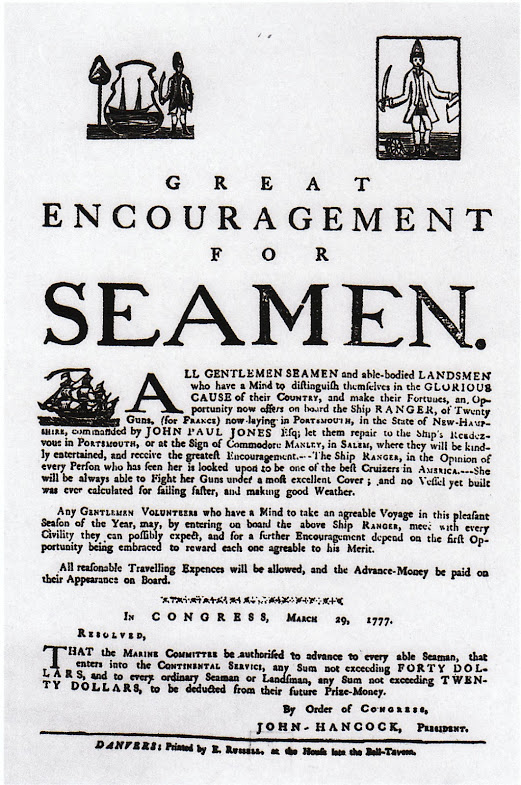On This Date In History
On April 10, 1778, Commander John
Paul Jones and his crew of 140 men aboard the USS Ranger set sail from
the naval port at Brest, France, and head toward the Irish Sea to begin
raids on British warships. This was the first mission of its kind during
the Revolutionary War.
Commander Jones, remembered as one of the
most daring and successful naval commanders of the American Revolution,
was born in Scotland, on July 6, 1747. He became an apprentice to a
merchant at 13 and soon went to sea, traveling first to the West Indies
and then to North America as a young man. In Virginia at the onset of
the American Revolution, Jones sided with the Patriots and received a
commission as a first lieutenant in the Continental Navy on December 7,
1775.
After departing from Brest, Jones successfully executed raids
on two forts in England s Whitehaven Harbor, despite a disgruntled crew
more interested in “gain than honor.” Jones then continued to his home
territory of Kirkcudbright Bay, Scotland, where he intended to abduct
the earl of Selkirk and then exchange him for American sailors held
captive by Britain. Although he did not find the earl at home, Jones
crew was able to steal all his silver, including his wife’s teapot,
still containing her breakfast tea. From Scotland, Jones sailed across
the Irish Sea to Carrickfergus, where the Ranger captured the HMS Drake
after delivering fatal wounds to the British ship s captain and
lieutenant.
In September 1779, Jones fought one of the fiercest
battles in naval history when he led the USS Bonhomme Richard frigate,
named for Benjamin Franklin, in an engagement with the 50-gun British
warship HMS Serapis. After the Bonhomme Richard was struck, it began
taking on water and caught fire. When the British captain of the Serapis
ordered Jones to surrender, he famously replied, “I have not yet begun
to fight!” A few hours later, the captain and crew of the Serapis
admitted defeat and Jones took command of the British ship.
One of
the greatest naval commanders in history, Jones is remembered as a
“Father of the American Navy,” along with fellow Revolutionary War hero
Commodore John Barry.
John Paul Jones recruiting poster for
crewing Ranger was the first recruiting poster for what would become the
United States Navy.
On April 10, 1963, the USS Thresher, an atomic submarine, sinks in the Atlantic Ocean, killing the entire crew. One hundred and twenty-nine sailors and civilians were lost when the sub unexpectedly plunged to the sea floor roughly 300 miles off the coast of New England.
The Thresher was launched on July 9, 1960, from Portsmouth Naval Yard in New Hampshire. Built with new technology, it was the first submarine assembled as part of a new class that could run more quietly and dive deeper than any that had come before.
On April 10, 1963, at just before 8 a.m., the Thresher was conducting drills off the coast of Cape Cod. At 9:13 a.m., the USS Skylark, another ship participating in the drills, received a communication from the Thresher that the sub was experiencing minor problems.
Other attempted communications failed and, only five minutes later, sonar images showed the Thresher breaking apart as it fell to the bottom of the sea. Sixteen officers, 96 sailors and 17 civilians were on board. All were killed.
On April 12, President John F. Kennedy ordered that flags across the country be flown at half-staff to commemorate the lives lost in this disaster. A subsequent investigation revealed that a leak in a silver-brazed joint in the engine room had caused a short circuit in critical electrical systems. The problems quickly spread, making the equipment needed to bring the Thresher to the surface inoperable.
The disaster forced improvements in the design and quality control of submarines.














No comments:
Post a Comment